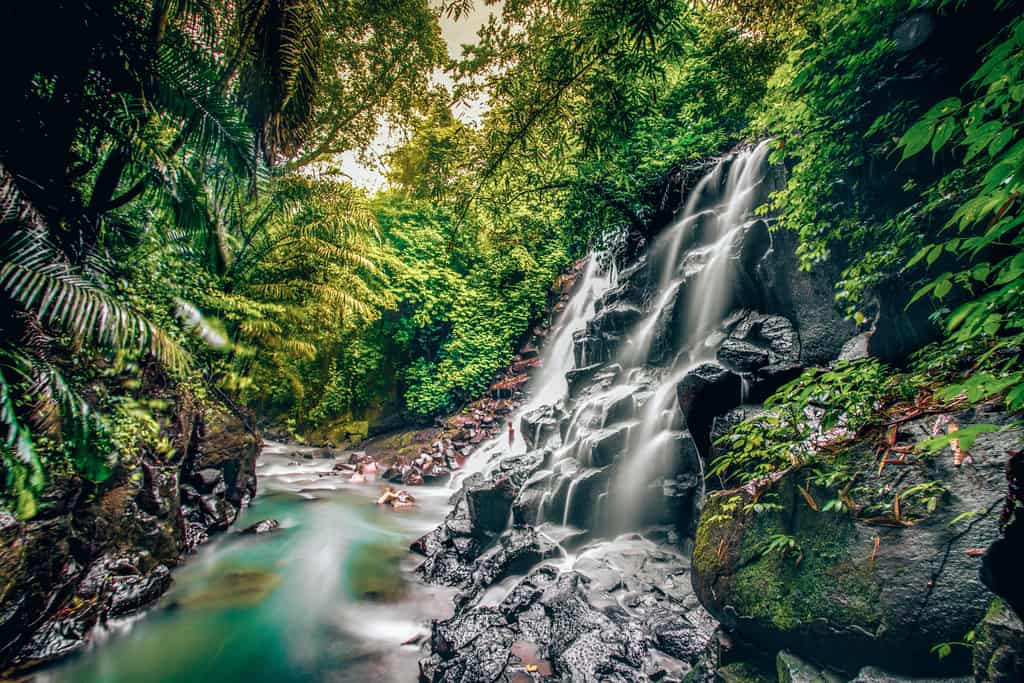Is Bali Worth Visiting In 2024: An Inside From Expats Who Live Here

You may be wondering: Is Bali worth visiting?
Living in Bali has given us a front-row seat to its many wonders, and we wholeheartedly believe that Bali is absolutely worth visiting.
Yes, there are over-touristy areas that perhaps have not much to do with the Balinese culture, and yes, Bali has many issues, such as traffic and trash problems, but that shouldn’t stop you from visiting Bali because the island of gods (Bali’s nickname) has so much to offer!
From the emerald-green rice fields that look like something out of a dream to the world-class surfing spots, unique bamboo accommodation options, and fancy beach clubs and dining, Bali offers a unique blend of natural beauty and a fun and boutique experience.

The island stands out for its distinct culture and religion, setting it apart from the rest of Indonesia, and the friendliness of its people only enhances its allure.
And trust us when we say there are many places in Bali, far from Kuta and Seminyak, that will blow your mind with their unique beauty! 🌴😉
In this post, we are sharing 20+ reasons why Bali may be worth visiting, and we also don’t shy away from pointing out all the negatives about visiting Bali.
Is Bali Worth Visiting In 2024?
The pain of seeing Bali shut down in 2020 was a harsh reminder of the struggles local communities face when tourism dries up. Many returned to traditional livelihoods like rice cultivation and seaweed harvesting, which, as you can imagine, are extremely low-paid.
We travelled around Bali during that time, and although we had its waterfalls and beaches entirely to ourselves, which was on some level amazing, we also knew what it meant to the people who make their living from tourism.
While tourism has its complexities, there’s no denying its positive impact on the lives of the Balinese.
What we most like about Bali is that it can deliver different travel experiences depending on your needs. If you’re a backpacker travelling on a budget with a penchant for lively nightlife, the island has that covered, offering vibrant bars and beachside parties.
For those seeking a luxurious getaway, opulent resorts in Seminyak or Nusa Dua provide an elevated experience replete with spa treatments and gourmet dining.
And let’s not forget the off-the-beaten-track explorers. Bali offers unique accommodation options like bamboo houses and authentic destinations like Sidemen and Munduk.
Pros & Cons Of Travelling To Bali

Here is a short summary to help us answer the question: Is Bali worth visiting, or is it ruined? Keep reading to read more about Bali.
PROS
CONS
22 Reasons Why Bali Is Worth Visiting
Is Bali still worth visiting? Here are all the reasons you need to know about to decide for yourself!
#1 Bali Is Still Super Affordable

Living in Bali has taught us just how far your dollar can stretch. Bali can truly be a budget traveller’s paradise. You can lodge with a local family at a homestay for as little as $10 a night and eat Indonesian for as little as $3 at a local warung.
Craving some Western comforts? Head to a stylish café, where smoothie bowls start at $4, and a cup of artisan coffee costs $3. But Bali isn’t just for budget travellers. For around $100, you can luxuriate in a private pool villa, and for a mere $50, you can hire a personal driver to explore the island at your own pace.
Of course, not everything in Bali is super cheap. Since the island is an extremely sought-after destination, here you will also find ultimate luxury hotels with nightly rates exceeding $500 and Michelin-starred eateries with hefty menu prices!
#2 Bali Rice Fields

Is Bali worth visiting? We think it is, even only for its magical rice paddies! Tegalalang near Ubud is often the first name that pops up, and rightfully so. The lush, terraced fields offer a serene experience that’s been capturing the hearts and camera lenses of travellers for years. But let’s venture beyond the well-trodden paths of Tegalalang, shall we?
Jatiluwih is another rice field paradise, and it’s nothing short of breathtaking. A UNESCO World Heritage site, Jatiluwih offers a more extensive expanse of terraced rice paddies and is far less crowded than Tegalalang.
The fields are so beautifully maintained that they almost resemble a massive natural amphitheatre of greenery. We absolutely love visiting Jetiluwih and strolling its expenses during the golden hour!
Then there’s Sidemen, a hidden gem located in East Bali. This area is the epitome of tranquillity, offering a view of rice fields with the majestic Mt. Agung in the background.
#3 Bali’s Spirituality & Incredible Temples
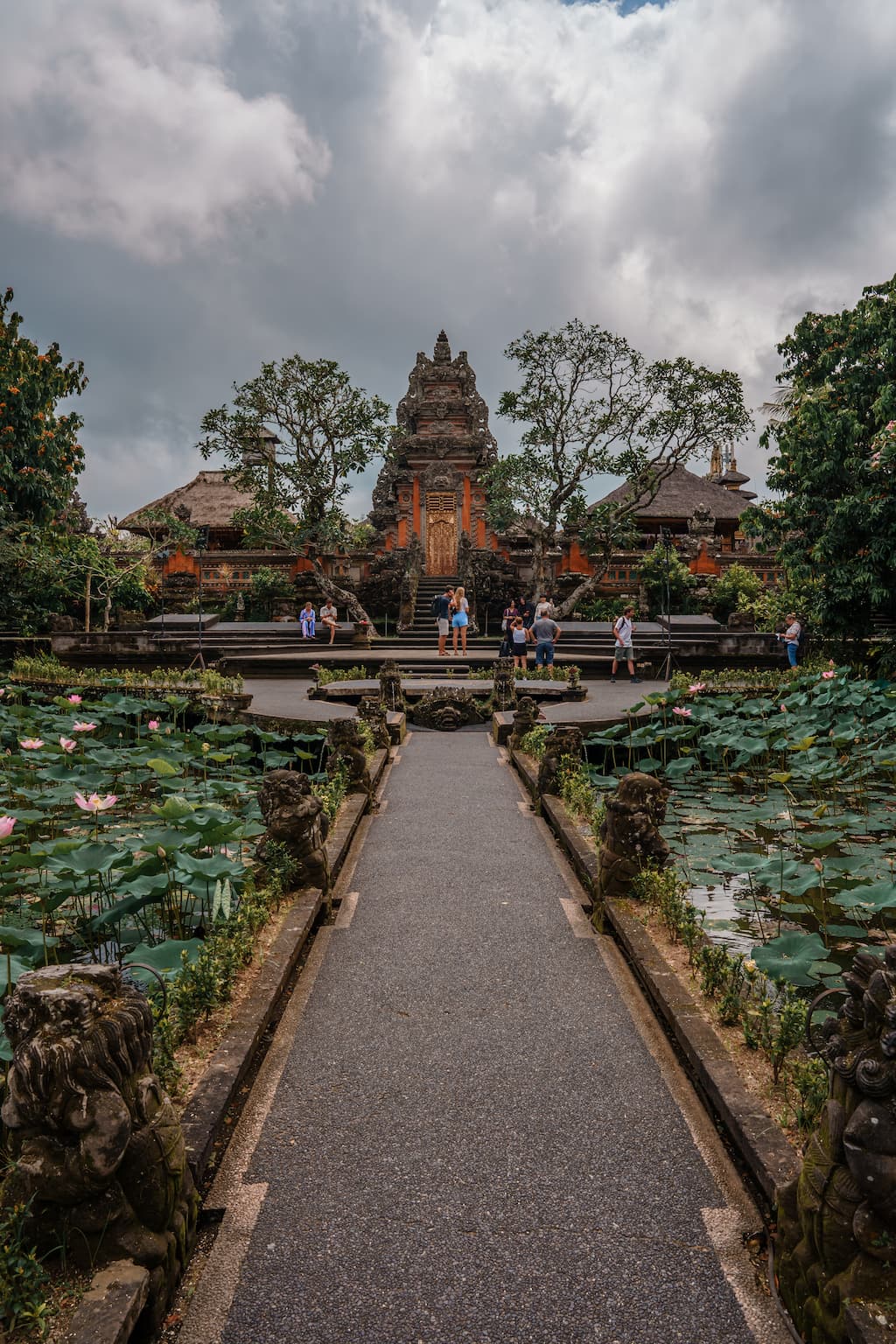
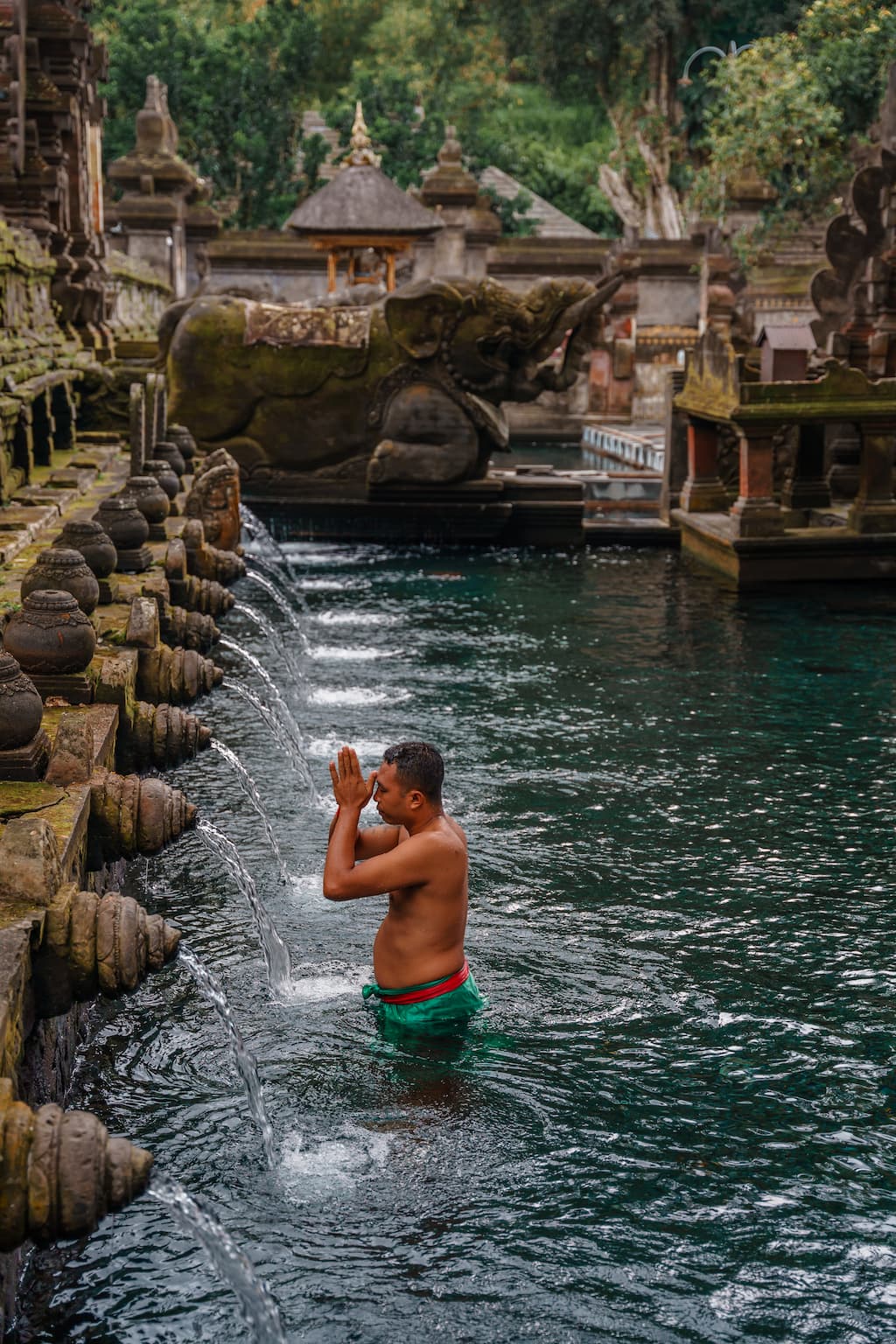
Spirituality isn’t just a facet of Bali; it’s the island’s heartbeat. You’ll notice small baskets filled with offerings of flowers, rice, and incense sticks almost everywhere- from the entrances of shops to the corners of busy intersections.
These daily offerings, known as “canang sari,” are a humbling reminder of how spirituality touches even the most mundane parts of life in Bali.
Balinese people have many unique celebrations, like Nyepi, the Balinese New Year, also known as the Day of Silence. Unlike other New Year celebrations, there’s no loud revelry here. Instead, the island shuts down, and locals observe a day of silence, fasting, and meditation. We were fortunate enough to experience Nyepi, and the serenity was palpable.
Balis is also home to many incredible temples, and one of the most famous ones is Uluwatu Temple, standing on the edge of a cliff that drops into the vast Indian Ocean below. The panoramic view from there is like nothing else, and if you’re lucky, you’ll catch a traditional Kecak fire dance at sunset.
The rhythmic chants and dances performed here tell stories from the Ramayana, and the backdrop of the sun sinking into the sea turns the whole experience into a mesmerising spectacle.
Pura Tirta Empul is another spiritual hotspot. Known for its sacred spring water, locals and tourists alike come for purification rituals. Participants move through a series of fountains while praying and dunking their heads under the water.
We took part in this cleansing experience, and we can attest that it’s rejuvenating, both physically and spiritually. It’s a ceremony that transcends religion and beliefs, connecting people through a shared feeling of renewal.
#4 Instagram-Famous Nusa Penida


Oh, Nusa Penida, where do we even start? When we first set foot on this island, we were prepared for its Instagram fame but not for the ethereal quality it exudes in real life.
There are many incredible places on the Penida Islands, but Kelingking and Diamond beaches are by far the most scenic.
Kelingking Beach viewpoint is a natural marvel that genuinely resembles a T-Rex– Mother Nature’s very own sculpture. Standing on the cliff edge, with the sound of the waves crashing below, it’s almost like you’re on the spine of a giant prehistoric creature.
And then, there’s Diamond Beach. If Kelingking is dramatic, Diamond Beach is like stepping into a fantasy. Stairways are carved into the cliffside, allowing you to descend onto a pristine beach where towering limestone cliffs frame an almost unbelievably clear sea.
#5 Enchanting Waterfalls

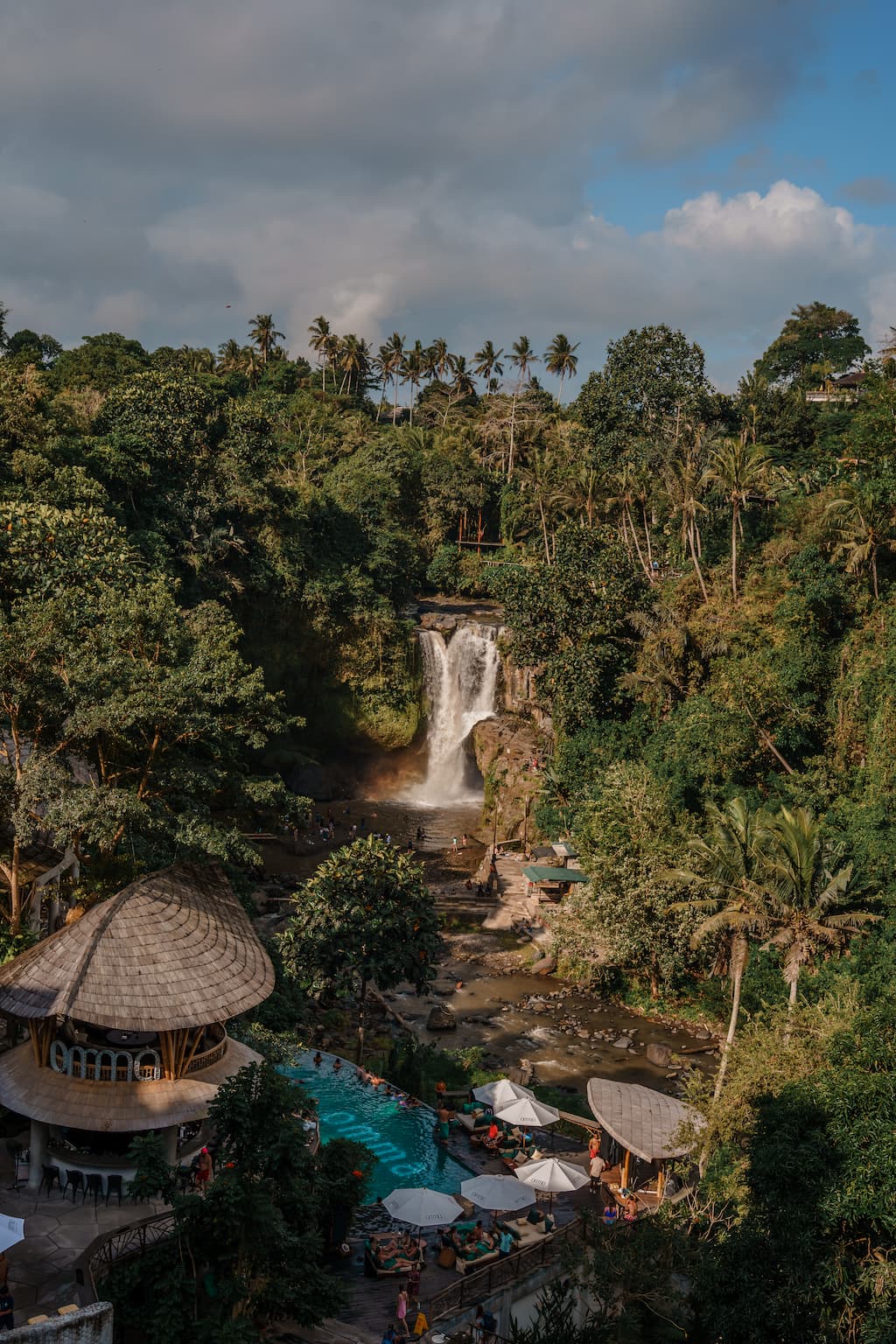
Is Bali worth visiting for its waterfalls? Absolutely! Each waterfall in Bali has its own personality, and the experience of visiting them is as much about the journey as it is about the destination. There are so many waterfalls on the island that it is impossible to visit them all. Some of them are super famous, and some are hidden gems.
The most well-known waterfall in Bali is Sekumpul, a towering giant hidden deep within the northern jungles. This is Bali’s waterfall royalty, boasting seven cascades that plunge dramatically, enveloping you in a cool mist and reverberating roars.
But there are more: Tibumana, Munduk, Benyumala, Kanto Lampo, the choice is almost infinite.
#6 Bamboo Houses
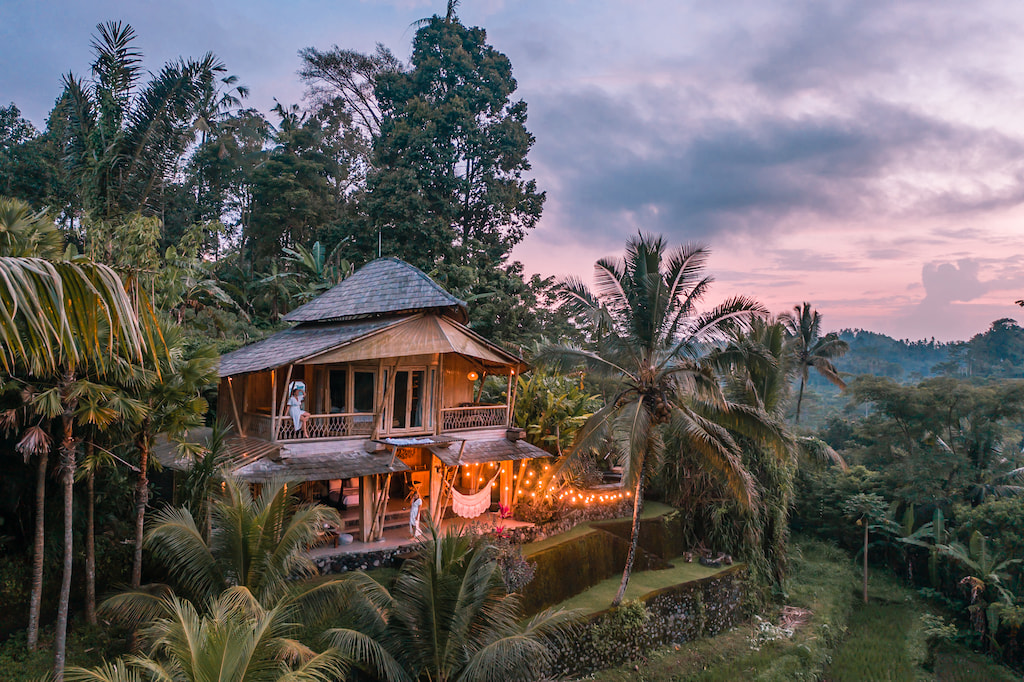
When in Bali, do not miss the chance to stay in a bamboo house. Some of the best bamboo houses in Bali that we stayed in include Camaya in Sidemen, Suenyo Eco Retreat in Tabanan (near Canggu), and Beehouse Dijiwa in Ubud.
What makes these bamboo houses even more special is how they’re constructed to harmonise with nature, not disrupt it. They utilise local materials, promote open-air living, and often feature natural pools or garden bathrooms. This isn’t just accommodation; it’s an ethical and aesthetic experience that deepens your connection with Bali.
So, if you’re the kind of traveller who values sustainability without sacrificing comfort, this is an experience you can’t afford to miss.
#7 Volcanos & Hiking Ops

Bali’s volcanic landscape is a world apart, a mesmerising contrast to the island’s more tranquil beaches and rice fields.
Kintamani, with its cooler temps, is an ideal respite from the typical Bali heat, offering an opportunity to wear a cosy sweater while enjoying a hot coffee- sourced right from the local plantations, of course. This is a prime spot to pick up some freshly roasted beans to remind you of your adventure long after you’ve descended.
It is also a fantastic part of Bali for outdoor and hiking enthusiasts, with the most famous trail up Mt Batur volcano. We’ve done the sunrise hike up Mt Batur, and trust us, the 2 a.m. wake-up call is well worth it when you’re greeted by the first rays breaking the horizon.
#8 Dolphins, Turtles, Manta Rays!

Bali’s diverse fauna is a treasure trove for nature lovers and adventure seekers alike. If you’re captivated by marine life, the island has plenty in store.
In Lovina, early morning boat rides offer the chance to see dolphins frolicking in the ocean waves. Seeing dolphins in their natural habitat is something you will not easily forget, trust us!
Snorkelling adventures in Gili Trawangan bring you face-to-face with serene sea turtles, while the Nusa Islands give thrill-seekers the unique opportunity to swim alongside majestic manta rays.
And for those who prefer terra firma, Ubud’s Monkey Sanctuary provides a fascinating glimpse into the lives of monkeys, all set in a lush, natural habitat.
#9 World Class Surfing

Is Bali worth visiting for the surf? Totally! Bali is one of the best places in the world for surfing, both for professional surfers who rip on tinny boards and those who want to try it out for the first time! Uluwatu’s powerful waves and dramatic cliffs create a pro surfer’s paradise, challenging even the most skilled riders.
On the other hand, the beaches of Canggu, Seminyak, and Kuta are ideal for those just getting their feet wet- literally. With forgiving waves, sandy bottoms, and instructors aplenty, it’s an inviting setting for beginners. The warm water is the cherry on top, ensuring you can catch waves in comfort all year round.
#10 Unique Culture

Bali’s unique culture is deeply rooted in Hinduism and enriched by a complex tapestry of mythology and tradition, making it distinctively different from the rest of the world or even Indonesia.
One of the ways you can develop into the Balinese culture is by attending one of the cultural performances, such as the Kecak dance.
Watching the fire dance performance as the sun sets over Uluwatu Temple isn’t just a feast for the eyes but also for the soul. This unique form of Balinese performance art combines intricate chanting and mesmerising fire rituals that leave an indelible impression.
#11 Bali Is A Yoga Heaven
The peaceful surroundings of Bali make it an ideal place for practising yoga and achieving a state of Zen.
Ubud is the epicentre of this movement, with multiple yoga schools and retreats that offer a range of styles and techniques. Whether you’re an experienced yogi or a curious beginner, Bali’s yoga scene is inclusive and comprehensive, helping you connect with your inner self amidst lush landscapes and tranquil temples.
#12 Bali’s Epic Beach Clubs

Is Bali worth visiting if you’re a nightlife lover? Absolutely! Bali is not only rice fields and temples. Here, you will have an incredible choice of stylish and fun beach clubs!
Only in Canggu, there are a dozen of them, with the most famous being Finns, which boasts epic infinity pools overlooking the ocean and themed parties. From DJ-spun tunes to cocktails that could double as works of art, this place perfectly nails the beach club vibe.
Switching gears to Uluwatu, Savaya is a cliffside haven for the elite traveller. With some of the most stunning panoramas you’ll ever lay eyes on, the ambience here is pure magic, especially when an international DJ takes the stage. Think about grooving to Jason Derulo or Dombrévsky as the sun dips below the horizon- absolutely surreal!
And let’s not forget Potato Head in Seminyak. This is where Bali’s chic crowd gathers to sip on innovative cocktails and enjoy an eclectic mix of music.
#13 Sidemen

Sidemen is the untapped jewel of Bali, far removed from the typical tourist hustle. With lush rice fields, panoramic views of Mt. Agung, and a distinct local charm, this place offers an authentic Balinese experience.
Here, you can hike through terraced fields, engage with the local community, and enjoy eco-luxury accommodations like Samanvaya Resort, making it a true refuge for the soul.
#14 FOOD


In Bali, the culinary landscape is a rich tapestry that effortlessly weaves together traditional Indonesian dishes with global flavours. Whether you’re yearning for nasi goreng at a local warung or seeking international cuisine like Mexican, Japanese, or even Polish pierogi, the island has something to satisfy every palate.
As if that wasn’t enough, Bali continually raises the bar when it comes to dining concepts. At The Cave, for example, you can indulge in a unique cave dining experience with the Indian Ocean as your backdrop.
Or perhaps you’d like to immerse yourself in an aquatic ambience? Head over to the Koral Restaurant, where you can dine while gazing at marine life through the glass walls of an aquarium.
Living in Canggu, we’re spoiled with the culinary scene. Every week, there seems to be a new, exciting restaurant popping up.
#15 Bali Is Super Safe

Bali is a very safe destination to travel to, which is one of the most important reasons to visit Bali, especially if this is your first time in Asia.
The locals are not just friendly but also respectful, which adds an extra layer of reassurance, particularly for female travellers.
During my first visit to Bali, I travelled alone and felt incredibly secure. This feeling only deepened when we moved here. Especially in less touristy areas, the locals are incredibly friendly and respectful. We’ve experienced genuine kindness, like the time we got lost in Nusa Penida after dark, and locals helped us find our way back, expecting nothing in return.
#16 Bali Coffee

Where do we even begin with Bali’s coffee culture? The island is famous for its unique Luwak Coffee, where the beans are first consumed by a civet and then collected after they’ve been naturally processed. Intriguing, right? A visit to a coffee plantation, like those in Munduk or Kintamani, is a must, and it will make Bali worth visiting even more!
But it’s not all traditional. Trendy, hipster cafes are sprouting all over the island, offering a modern twist on this age-old beverage. Places like Montagna del Café in Kintamani or Revolver Espresso in Seminyak not only serve exceptional brews but also add an aesthetic flair to your coffee experience.
#17 Postcard-Perfect Gili Islands
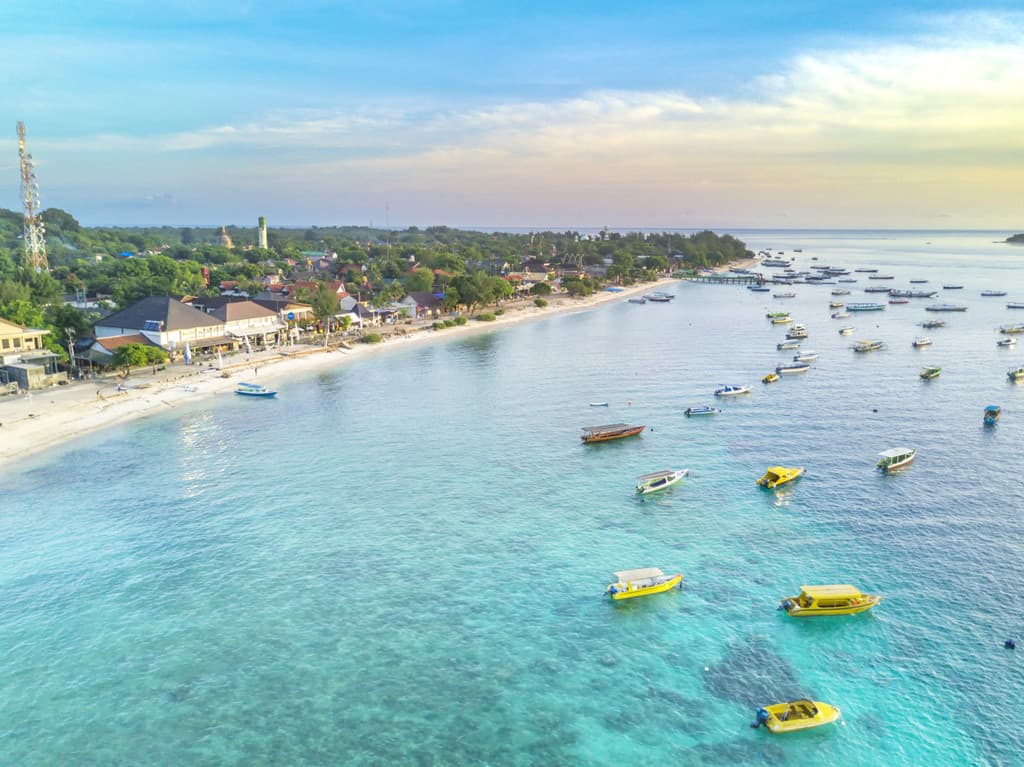
Just a boat ride away, the Gili Islands offer a different vibe entirely. White sandy beaches, vibrant coral reefs, and crystal-clear waters make it a snorkeler’s dream. And let’s talk about the no-car policy. Yes, you heard it right. There are no buzzing mopeds or honking horns here, and you can just stroll or cycle around the island.
Gili Trawangan, or Gili T as it’s affectionately known, is the life of the party. Think beach bars, live music, and fire dancers.
Gili Meno, on the other hand, is the island of love- ideal for honeymooners or anyone looking to escape the buzz. It’s quieter, with secluded beaches that make you feel like you’re on your own private island.
Then there’s Gili Air, a tiny off-the-beaten-track island.
#18 Digital Nomad’s Paradise

As digital nomads who’ve set up a base in Canggu, we can vouch for Bali’s appeal to the location-independent. With a plethora of coworking spaces, creative cafes, and a community of like-minded individuals, it’s easy to feel inspired here.
But let’s be honest- Canggu’s rising popularity comes with its own set of challenges. Accommodation prices are on an upward trend, and what was once a sleepy surfer town is now bustling, leading to increased traffic, especially during peak hours. However, in our eyes, the pros still outweigh the cons.
#19 Bali People
The Balinese are some of the friendliest and most respectful people we’ve encountered. It’s crucial, though, to return that respect by being mindful of local customs and traditions.
#20 Epic Glamping Ops


If you’re a nature and glamping lover, there is only one correct answer to the question – Is Bali worth visiting, here, you’ll find so many amazing glamping sites!
At Nyang Nyang Bubble Hotel in Uluwatu, for instance, you’ll find yourself perched on a cliff in a bubble tent, staring out into the endless ocean. Soaking in awe-inspiring views by day and counting stars by night, you’ll realise this isn’t just about sleeping under the sky- it’s an unfiltered, luxury-laced communion with nature.
If cliffside vistas aren’t your thing, how about beachfront grandeur? Bali Beach Glamping near Canggu provides just that. Your abode is a luxury tent- think comfy beds, plush furnishings, and even air conditioning- positioned steps away from the surf, where you can wake up to the sounds of waves and go to sleep under a canopy of stars.
#21 Munduk

Is it worth going to Bali for off-the-beaten-track destinations? Hell yes!
Munduk, a place where the cooler climate offers a refreshing change from the heat of the coast, is one of them. Tucked away in the misty mountains of the north, Munduk is a paradise teeming with natural splendour.
Waterfalls like Munduk and Benyumala dot the landscape, each offering a chance for a tranquil dip or an awe-inspiring photo op.
It’s not just about the waterfalls, though; the nearby Pura Ulun Danu temple is another must-see, set against the tranquil backdrop of Lake Beratan and Lake Tamblingan. This majestic temple seems to float on the water, making it a dreamy and surreal experience that epitomises the spiritual serenity that Munduk offers.
#22 Bali Healers
Bali is a haven for alternative medicine and traditional healing practices. My partner Robin has personally benefited from acupuncture treatments by local healers. It’s a holistic approach that offers relief from ailments without the need for medication, proving that Bali nurtures both the body and the soul.
Is Bali Overrated?
Is Bali worth it, or is Bali ruined? Here are the most significant issues the island of gods is suffering from and why some people complain about Bali.
#1 Crazy Traffic

Bali’s once-quiet streets have given way to a continuous flow of scooters, cars, and tour buses, particularly in areas like Canggu, Seminyak, and Ubud. The traffic jams can be overwhelming, often turning a short journey into a protracted ordeal. Be prepared to adjust your schedule and maybe take a deep breath or two.
We live in Canggu, and when we want to travel to another part of the island, we always do it as early in the morning as possible, but sometimes the crazy traffic is impossible to avoid! To us, traffic is the worst disadvantage of living here.
#2 Touristy Areas
Places like Seminyak Beach and Canggu have become magnets for tourists, leading to crowded markets, inflated prices, and a general loss of authenticity in some quarters.
While these areas still have their charm, you might have to look a little harder to find it amidst the throngs of tourists. We recommend adding to your Bali itinerary more authentic places, too, such as Sidemen or Munduk, for a rewarding, well-rounded experience.
#3 Bali Influencers
The rise of Instagram has led to a complex landscape of tourism that can be both detrimental and beneficial to Bali. On the one hand, it’s hard to ignore the seemingly disrespectful acts, like scantily-clad aspiring models posing in front of sacred temples, reducing these revered sites to mere photo ops.
These actions not only trivialise the rich Balinese culture and traditions but can also offend the local community.
On the other hand, Instagram has also been a platform for talented photographers to capture and showcase the unique beauty of Bali in a respectful way. These photos often intrigue and inspire people to visit, thereby contributing to the local economy.
The reaction to “Instagrammable tourism” is polarised. While some locals and tourists get visibly annoyed seeing influencers set up elaborate photo shoots, it’s essential to note that all tourists are capturing memories, whether it’s with a smartphone or a high-end camera.
Often, the critique against influencers taking photos in tourist spots comes from a place of jealousy rather than genuine concern for the island’s wellbeing.
As travel content creators ourselves, not Instagram influencers, we understand the nuances. We prefer capturing Bali’s allure in the early morning hours during sunrise when the spots are less crowded and the atmosphere is serene.
In this way, we believe we can celebrate Bali’s essence without contributing to the over-tourism and spectacle that have come to annoy so many.
#4 Trash
While Bali is undeniably beautiful, it also faces a growing waste management issue. During the rainy season, it’s not uncommon to see beaches littered with plastic. Efforts are being made to tackle the problem, but it’s a long road ahead.
The island has initiated various efforts to mitigate this pressing issue, including beach clean-ups and educational campaigns targeting both tourists and locals. The Balinese government has even imposed a ban on single-use plastics, aiming to reduce plastic waste by 70% within a year.
However, these measures are just the tip of the iceberg. Sustainable waste management solutions need to be developed and implemented on a much larger scale to make a lasting impact.
#5 Over Development

The tourism boom in Bali is a double-edged sword, driving economic growth but also putting a strain on its environment and resources. One glaring issue is the rampant overdevelopment that is transforming the island’s landscape at an alarming pace.
Rice fields, once the island’s verdant signature, are rapidly being replaced by hotels, villas, and shopping complexes. This not only disrupts the traditional Balinese way of life but also poses an environmental dilemma.
Water scarcity is becoming an increasingly critical issue as the demand from tourism-related activities outstrips supply. Many locals have to rely on expensive trucked-in water, while some aquifers are getting contaminated due to the overuse and poor management of septic systems.
The overdevelopment is also affecting Bali’s traffic situation, leading to gridlocks in busy tourist areas, further escalating the island’s carbon footprint.
These challenges cast a shadow on Bali’s otherwise bright tourism industry. And the irony is that the very natural beauty and tranquillity that draw people to Bali are being jeopardized by the frenzied development aimed to accommodate them.
As responsible travellers, it’s vital to consider the impact of our choices, perhaps opting for eco-friendly lodgings and being mindful of our water usage, to help mitigate these issues.
Best Places To Stay In Bali
I hope we’ve already answered your pressing question Is Bali worth visiting, and if you still want to visit, here are the best areas to stay.
📍CANGGU ➡️ Best Place To Stay In Bali For Surf Aficionados, Backpackers & Nightlife.
Situated to the west of Kuta and about an hour’s drive from the airport, Canggu is a haven for Bali’s expat community, us included. This vibrant locale is brimming with hip cafes, innovative start-ups, and collaborative co-working environments.
When the sun sets, Canggu also comes alive with an eclectic nightlife scene. Plus, the surf conditions here cater to everyone, from novices to pros, making it an all-around gem for those looking to ride the waves.
🌟 TOP PICK ➡️ Echo Beach Villa and Apartment
📍SEMINYAK ➡️ The Prime Location in Bali for Couples, Culinary Enthusiasts, and Night Owls.
For those who crave stylish accommodation, gourmet experiences, vibrant nightlife, and an energetic vibe, Seminyak should definitely be on your radar as a perfect base.
🌟 TOP PICK ➡️ Anantara Vacation Club
📍ULUWATU ➡️ The Ideal Spot in Bali for Beach Lovers & Couples
Nestled at the southern tip of Bali on the Bukit Peninsula, Uluwatu is roughly an hour’s drive from the airport. This area boasts some of Bali’s most stunning beaches, sophisticated beach clubs, and top-notch surf breaks.
🌟 TOP PICK ➡️ Terra Cottages Bali
📍UBUD ➡️ The Go-To Destination In Bali For Yoga, Nature & Cultural Richness.
Nestled centrally within the island, Ubud serves as an ideal starting point for diving into Bali’s more genuine experiences—be it exploring waterfalls, scaling volcanoes, or temple-hopping. Revered as the spiritual and cultural heart of the island, Ubud is a sanctuary for those seeking tranquil nature escapes and transformative yoga retreats.
🌟 TOP PICK ➡️ Gayatri
Tips For Travelling To Bali
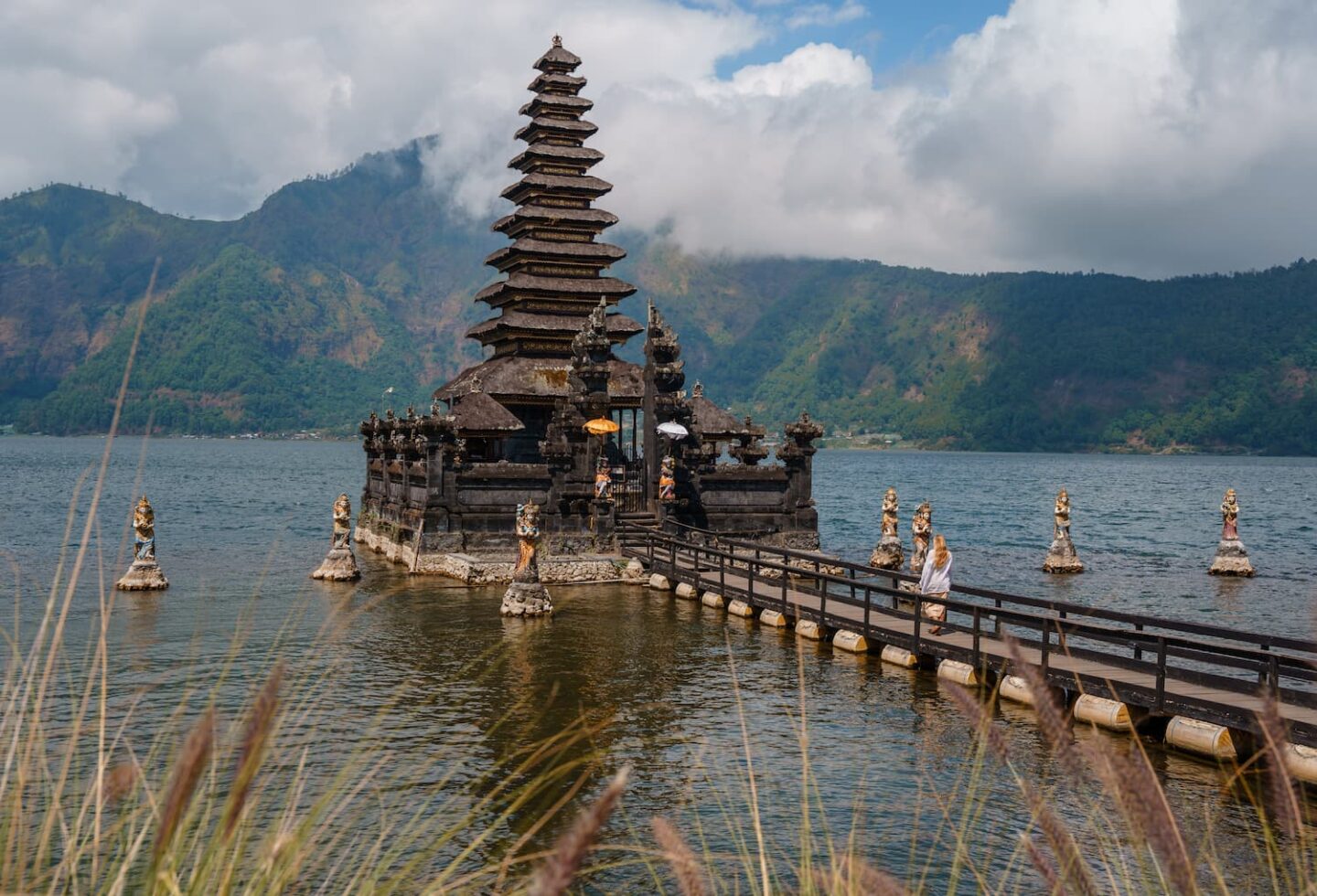
Here are the most important things to know before going to Bali:
1️⃣ Embrace the Local Culture: Bali is steeped in a unique form of Hinduism that’s distinctly different from other parts of Indonesia. Attending traditional ceremonies or visiting ancient temples can offer a fascinating glimpse into Balinese culture. However, do remember to dress appropriately (cover your shoulders and legs) and follow all guidelines while entering these sacred spaces.
2️⃣ Be Cautious with Street Food: While Bali offers a plethora of mouth-watering local dishes, “Bali Belly” is a real concern. Stick to restaurants and vendors that are popular and well-reviewed to minimise the risk.
3️⃣ Haggle but Be Respectful: Bargaining is part of the shopping culture in Bali, especially in markets. However, it’s essential to maintain a sense of respect and not push too hard. Remember, what might be a small amount to you could mean a lot to the local vendors.
4️⃣ Stay Hydrated and Protected from the Sun: Bali’s tropical climate can be deceptive. You might not feel thirsty, but dehydration can sneak up on you. Always carry a reusable water bottle, and don’t forget your sunscreen. Trust us, the Balinese sun is far more intense than it seems through those Instagram filters!
5️⃣ Be Mindful of the Environment: Bali is grappling with issues like overdevelopment and waste management. As a responsible traveller, aim to minimise your footprint. Avoid single-use plastics, respect the wildlife, and consider participating in community-based eco-tourism activities.
6️⃣ Think Twice About Scooter Driving: The idea of zipping through Bali’s scenic roads on a scooter might seem idyllic, but the reality can be quite different if you’re not an experienced rider. Traffic rules are more like guidelines here, and the road conditions can be unpredictable.
If you’re not confident on a scooter, either opt for other modes of transport or consider taking a few riding lessons locally before you hit the road. Trust us, nothing dampens a Bali holiday like an unexpected visit to the hospital.
Is Bali Worth Visiting: FAQ
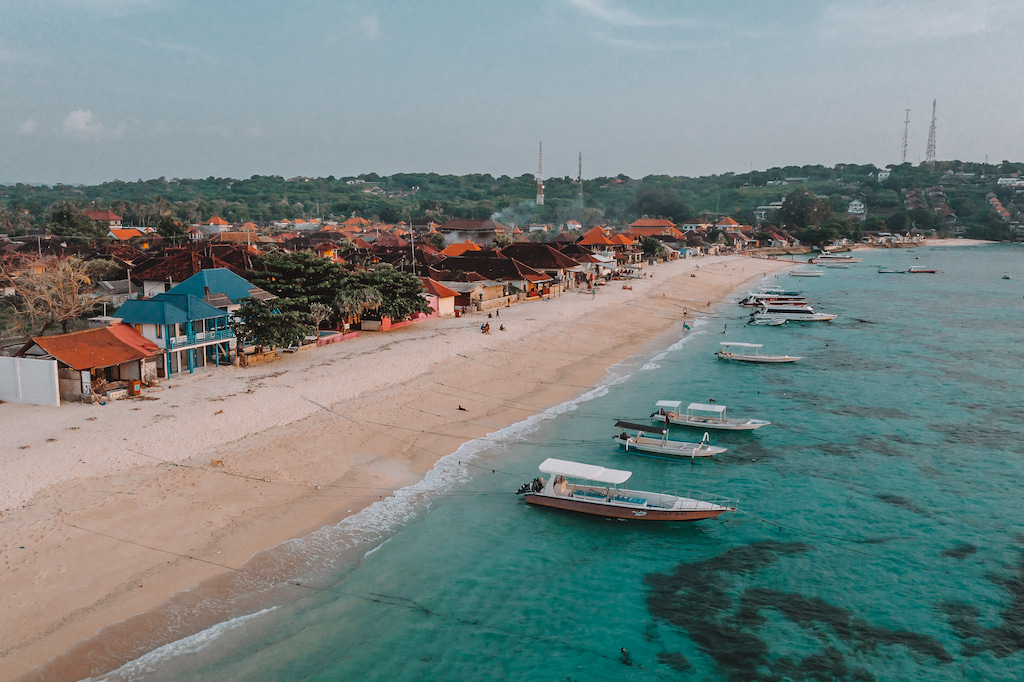
Is Bali expensive?
“Is Bali expensive?” is a million-dollar question- or should we say the million-dollar question?
The cost of travelling in Bali offers a spectrum that caters to different budgets. You can have a simple but satisfying meal of nasi goreng for around $1-$3 at a local warung, while a dinner at a higher-end restaurant could set you back $20-$40 per person.
A night in a budget guesthouse can cost as little as $10, but luxury villas could cost anywhere from $100 to $500 per night. Transportation, like scooter rentals, is relatively cheap, often around $5 per day. On the flip side, entrance to a swanky beach club might require a minimum spend of $20-$50.
What is the best time to visit Bali?
The answer really depends on what you’re looking for, but generally speaking, the dry season from April to October is often considered the best time. During these months, you’ll experience less rain, lower humidity, and plenty of sun, making it ideal for outdoor activities like hiking, surfing, and beach-hopping.
However, if you’re a fan of lush landscapes and fewer crowds, the wet season from November to March has its own charm. This is the time when Bali’s rice terraces are at their greenest. Plus, it’s perfect for waterfalls, which are in full flow this season. Just pack a raincoat and be prepared for afternoon showers.
Keep in mind that July, August, and the Christmas/New Year period are high seasons, which means more crowds and higher prices.
How many days are enough in Bali?
How many days are enough to truly experience Bali? Let’s break it down. If you have a week, you can get a fantastic sampling of what the Island of Gods offers. In a 7-day itinerary, you might explore the cultural richness of Ubud, laze around the beach clubs in Seminyak, and catch some waves in Canggu or Uluwatu. You’d also have time to venture out for a sunrise trek up Mount Batur.
Is it worth visiting Bali for longer? Absolutely! Two or three weeks give you more room to breathe and delve deeper. You could add a visit to the less-touristy northern region like Munduk, famous for its waterfalls and cooler climate, or Amed, known for its incredible snorkelling and diving opportunities.
You might also consider hopping over to the nearby Gili Islands or Nusa Islands for a different island vibe. Trust us, the longer you stay, the more hidden gems you’ll discover.
If you’re into digital nomadism, a month or more will allow you to really feel the pulse of Bali, from its bustling coworking spaces to its quieter, spiritual corners. The island has a magnetic quality that makes one week turn into two, two weeks into a month, and before you know it, you’re looking at long-term rentals!
Is Bali safe?
Absolutely, Bali is generally considered to be a safe destination for travellers, including solo female adventurers. Violent crime is relatively rare, and the island’s residents are generally friendly and respectful towards visitors. However, like anywhere else, it’s always essential to take precautions.
Traffic rules can be lax, so if you’re riding a scooter, make sure to wear a helmet and understand the basic traffic norms.
Of course, there’s also the notorious “Bali Belly,” a term for traveller’s diarrhoea that visitors sometimes experience due to a change in diet or water contamination. It’s advisable to drink only bottled or treated water and to be cautious with street food to minimise the risk.
Is Bali overrated? Is Bali Ruined?
The question of whether Bali is overrated often comes hand-in-hand with concerns about it being “ruined” due to over-tourism and commercialisation. True, some of its most popular spots can be crowded, and certain areas have seen a surge in development that detracts from the natural beauty.
So is it worth visiting Bali? Totally the island still possesses an enduring charm that makes it worth visiting. Even with its mainstream tourist areas, Bali offers secluded beaches, sacred temples, and untouched nature reserves that give you a glimpse into its soul.
It’s all about what you make of it. Step off the beaten path, and you’ll discover that Bali still has a wealth of authentic experiences to offer.
Is Bali dirty?
The perception of Bali as “dirty” is a complex issue that often centres around the challenges of waste management on the island. In popular tourist areas like Kuta, you might encounter litter, especially after high tourist seasons or beach parties.
However, labelling the entire island as dirty would be an overgeneralisation. Many places in Bali, like Ubud or the less-visited northern regions, are well-maintained and reflect the locals’ deep respect for nature.
Efforts are also underway to tackle the waste issue, with initiatives focused on recycling and educating both locals and tourists about responsible waste disposal.
Shall I take cash to Bali?
No need to burden your wallet with heaps of cash before arriving in Bali. The island has a plethora of ATMs where you can withdraw local currency at much better rates than you’d typically get when exchanging money back home.
Major tourist areas like Seminyak, Ubud, and Canggu are flush with ATMs, and you’ll find that many restaurants, shops, and even some local vendors accept card payments.
Is Indonesia worth visiting?
Absolutely, Indonesia is a treasure trove of experiences that offers something for every kind of traveller. Imagine an archipelago of over 17,000 islands, each with its own unique culture, landscapes, and biodiversity. Bali may be the most famous, but it’s just the tip of the iceberg.
Adventure-seekers can explore the jungles of Sumatra, home to the endangered orangutans, or hike up to the otherworldly blue flames of the Ijen Crater in Java.
Culture buffs will love Yogyakarta, the heart of Javanese art and history, or the ancient tribal traditions of the Asmat in Papua. And let’s not forget Komodo Island, where you can get up close and personal with the awe-inspiring Komodo dragons. Plus, Indonesian cuisine is as diverse as its islands, from spicy rendang to sweet martabak.
Is Bali Worth Visiting: Final Word
Absolutely, Bali is worth every bit of the hype. From its rich cultural tapestry woven with Hinduism and vibrant local traditions to its diverse landscapes that include everything from misty mountains to world-renowned beaches, Bali is not just a destination but an experience.
Whether you’re an adventurer looking to surf in Uluwatu, a foodie eager to try the eclectic culinary scene of Seminyak, or a spiritual seeker wanting to visit awe-inspiring temples like Pura Tirta Empul, Bali is the place to be.
Sure, some critics might argue the island has become too touristy or that it’s been “ruined” by its own popularity. However, the essence of Bali- its unparalleled natural beauty and the warmth of its people- remains as potent as ever.
So, is Bali worth visiting? Our resounding answer is yes, without a doubt.



